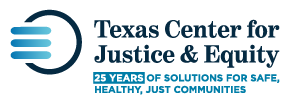
Texas Puts Money in Taxpayer Pockets, Needs to Spend Better
Texans will save an estimated $92 million when shopping for school supplies during this weekend’s “tax free” days. Everyone enjoys a good discount, and that money will help families buy their kids the learning tools they need. But Texas faces a big budget shortfall this year thanks to lower gas prices. State leaders will be looking for more efficient, less costly ways to fix roads, fund schools, and secure our communities while still giving money like this back to taxpayers.
Texas could reduce prison populations by 4.6 percent within three years, improve public safety, and save taxpayers hundreds of millions, simply by changing how we manage people who commit nonviolent crimes – people who return to our communities by the tens of thousands each year more damaged than the day they were convicted, and now with little chance of getting a job.
[Click to continue reading this op-ed]
Texas has long understood that our massive prison system had become unsustainable, and lawmakers have taken a careful, incremental approach to change. Starting in 2007, Texas launched reforms that have become a national model – stronger community supervision, more treatment beds, and support for specialized drug and veteran’s courts.
Those reforms prevented another round of prison construction ten years ago. Today our prison population is about 5 percent smaller than it was at its peak, even though our state population is growing rapidly. We now have a decade of experience showing that alternative approaches make communities safer at a lower cost to the taxpayer. That’s because community supervision can address drug addiction and get people back to work – things our prison system doesn’t do very well at all.
From a decade of carefully crafted pilots and experimentation, we know how to reduce sentences, improve success rates for community supervision, and create appropriate incentives for good conduct. Some of the money saved from these reforms can be reinvested at the local level to further expand drug treatment, job training, and jobs so that people get meaningful assistance as they break away from their old criminal behaviors.
A felony conviction is among the most serious barriers to employment, leading desperate people to commit crimes again. For that reason, several of the lowest-level, nonviolent felony offenses should be reclassified to Class A misdemeanor offenses, including possession of very small amounts of drugs. People will still face real consequences for breaking the law, but this strategy will better connect people to drug treatment and move them into the workforce, rather than allowing a felony conviction to permanently damage their future job prospects.
Vocational training and drug treatment make all the difference. Rapid reemployment following release from incarceration significantly reduces the likelihood of re-arrest. And that in turn saves taxpayers even more money. One study demonstrated that if 100 formerly incarcerated people find a job, they boost sales tax revenue by $770,000, and taxpayers save $2 million annually by reducing the criminal justice system costs associated with a relapse into crime.
And what can we do with all that money we save? Well, just about anything that Texas voters and Texas lawmakers think is important. Everyone likes to have a little more money in their pocket.
